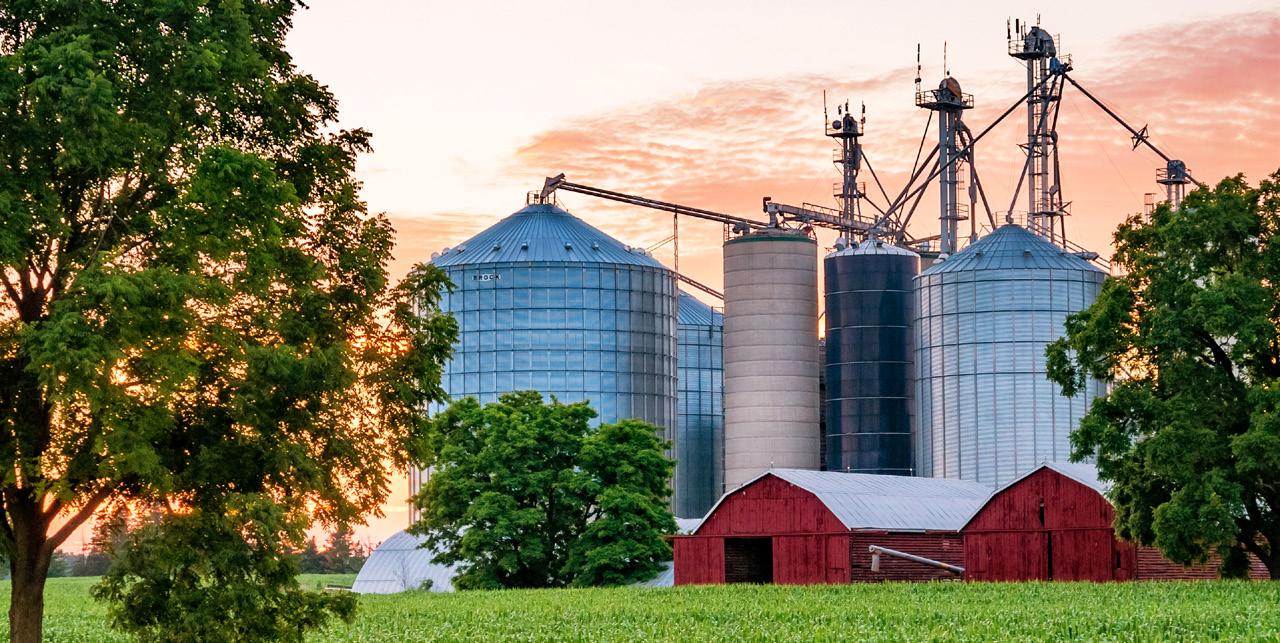
6 minute read
Family and Legacy
by Pinion
The Changing Dynamics of Land Ownership
The future face of farming
Advertisement
Changes in land ownership and the farming workforce are unfolding across U.S. agriculture. Among key drivers, of course, is the aging population of American farmers and ranchers:
•In the next 15 years, the ownership of 40% of
America’s agricultural land will be in transition, mostly due to aging landowners, reports
American Farmland Trust (AFT).
•Further, USDA’s 2017 Census of Agriculture found the average age of U.S. farmers had climbed to 57.5 years in a five-year span. The survey also noted the age of agriculture’s primary producers was even higher at 59.4 years old.
But other dynamics are also coming into play. Millennials, or Generation Y, are rising to become agriculture’s leaders, managers, and decisionmakers. Now reaching their 40s, Millennials came of age in a world much different from that of their Baby Boomer parents.
They’ve been shaped by the Internet, mobile devices and social media. They’re comfortable with technology, innovation, diversity and a broader global view. Millennials are typically more formally educated too, with a higher rate of ag and businessrelated degrees. And, increasingly, agriculture’s changing faces are female. Today, 43% of U.S. farmland — nearly 388 million acres— is farmed or co- farmed by women, AFT notes. Meanwhile, according to USDA’s 2017 ag census, 36% of all producers are women, and more than half of all farms have at least one female decision-maker.
In the next 15 years, the ownership of 40% of America’s agricultural land will be in transition.
– American Farmland Trust
In the past year, U.S. agriculture has seen more women coming back to join their family farms. “Women have realized it takes brains, not brawn, to run a profitable farming operation,” says KCoe Isom principal Jeanne Bernick. “We are seeing more interest from women in the next generation of family business operators asking about the skills and financial knowledge they need to grow their business to the next level. These women are often leaving six-figure corporate jobs to come back to a rural community and family business to raise their own kids.” The number of women managing or operating farms and ranches has increased, while the number of male producers declined 1.7%, compared to 2012. Coupled with this, more women than ever are involved in other agricultural careers or studying agriculture in post-secondary institutions, according to a survey by Annie’s Project and Farm Credit. “The biggest shift is women continuing to own farmland after a death or divorce or dissolution from their spouse,” says Bernick. One out of every four acres of Iowa farmland is owned by a woman over 65, according to Iowa State University. Women’s issues on the farm center on landlord relationships, leasing agreements and other estate tax issues related to land ownership. As far as principal farm owners, the numbers nationwide highlight a focus on smaller operations, principally vegetable and agritourist operations. Ninety-eight percent of womenowned farms have less than $250,000 in sales, according to USDA. Despite the growth in women coming back to the farm, women producers remain underserved by traditionally male-dominated farm meetings. Most women are looking for resources related to organization growing pains, commodity marketing knowledge and human resources. As a result, many state and regional support networks offer women opportunities to work together, share concerns and strengthen their farm-family role. A larger knowledge base and stronger interpersonal relationship skills can make the difference between success and letdown for women farmers.
Characteristics of women in agriculture, 2021
•Women own 30% of U.S. farmland. • Nearly half of female farmers raise livestock. • Women who specialize generate 72% of sales on all women’s farms. • Very few are involved in traditional large commodity farming. • Younger women are entering farming. • They’re changing careers to engage in agriculture. • Many gain control through family inheritance, divorce or death. • More brains, less brawn: Technology allowed women to come back to farm. • Women look at wheat in the field as food.

Planning for change
These changing demographics present both challenge and opportunity for American farm and ranch families. They point to the need for today’s ag landowners to consider how they will transition their land and assets and who will take over the business. In addition to these evolving dynamics, family ag businesses must still reckon with life’s inevitable events, such as marriage, divorce, death and business changes. Unfortunately, most businesses only act when there is sudden illness or untimely death in the family. These further underscore the need for family ag businesses to get serious about succession planning.
A good succession plan helps family businesses determine what their future will look like. It’s developed through a process of collaboration and consensus. It involves hard questions and difficult conversations: How can we successfully transition our business to the next generation? Do we stay together or sell out altogether? How should we handle siblings or children? When should we make ownership and management changes? Succession planning issues are the same everywhere, in every family.
Also important is estate planning, which provides the mechanics to implement the succession plan.
Not having discussions about the future or failing to develop a succession and estate plan is a recipe for failure. There are far too many stories of ag businesses that have fallen apart or families that lost the farm because the kids fought over the land. With that comes unnecessary litigation or accounting expenses – and a future of family bitterness.
With so much at stake, it’s essential for U.S. farming and ranching families to chart a clear path forward. Determining who will succeed you, deciding what to do with your assets, and minimizing estate taxes will remain vital for protecting and preserving the generational wealth of family-owned farms and ranches.
30% 12% 3%
Realities of sixthgeneration farming
A six-generation agriculture business that had been passed down from parents to their three sons engaged a succession planning expert. The three sons were married and had adult, married children and young grandchildren. The expert started the process by having individual conversations with each family member.
Through the course of starting and facilitating conversations, they were able to get to the bottom of what was causing tension in the family. They were able to determine who had true interest in the business and where the financial stability of the business stood for the next generation. The process helped them designate which kids, and at what ages, would enter into the business. The family also agreed upon future technology considerations that could impact both efficiency and profitability for the business.
Had this family not started the succession-planning process and had those conversations, the business and its legacy could be in jeopardy as tensions would continue to build around the uncertainty of the future. This healthy ag business could have easily fallen victim to the 97% failure-rate statistic that is the startling reality for a sixth-generation business transition today.









